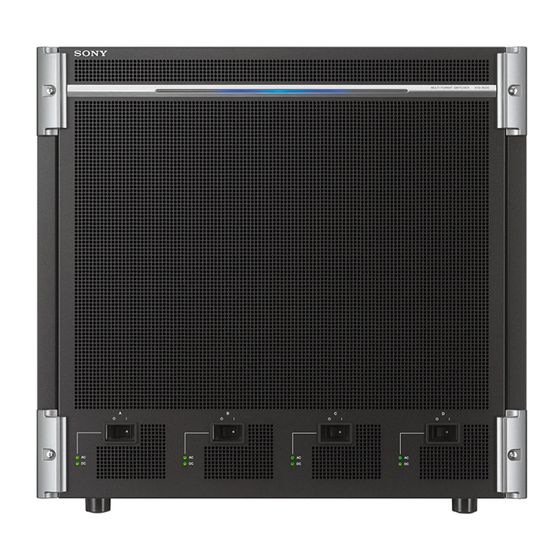Table of Contents
Advertisement
Quick Links
Multi Format Switcher System
XVS-8000 System
(With ICP-X7000 Integrated Control Panel)
XVS-8000
XKS-S8165
XKS-8460
XZS-8520
ICP-X7000
MKS-X7018
MKS-X7023
MKS-X7032
MKS-X7041
MKS-X2700
User's Guide
Software Version 2.10 and Later
1st Edition (Revised 2)
XKS-S8110
XKS-T8165
XKS-8470
XZS-8530
MKS-X7075
MKS-X7019
MKS-X7024
MKS-X7033
MKS-X7042
MKS-X7700
[English]
XKS-T8110
XKS-8210
XZS-8200
XZS-8540
MKS-X7011
MKS-X7020
MKS-X7026
MKS-X7035
MKS-X7701
XKS-8160
XKS-8440
XZS-8510
XZS-8550
MKS-X7017
MKS-X7021
MKS-X7031TB
MKS-X7040
MKS-X7702
Advertisement
Table of Contents
















Need help?
Do you have a question about the XVS Series and is the answer not in the manual?
Questions and answers